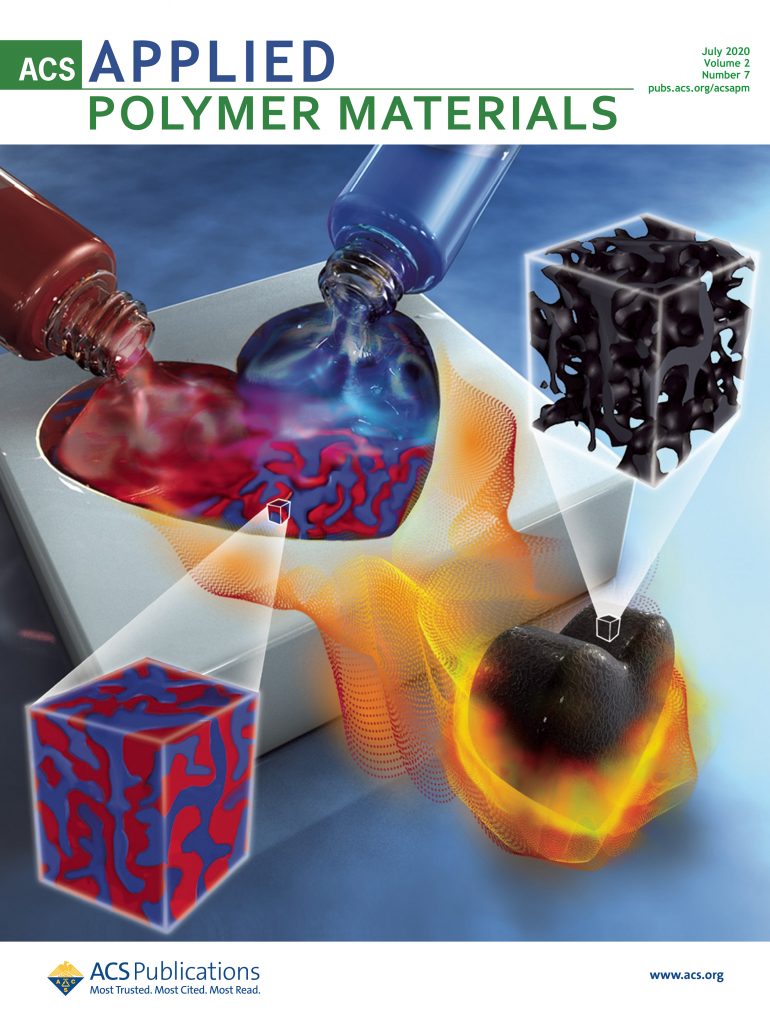Two-Coordinate Coinage Metal Complexes Featuring Imidazolium Carbenes: Realization of Efficient Blue Thermally Activated Delayed Fluorescence (TADF) for Organic-Light-Emitting Diodes (OLEDs)
IF 4.4
2区 化学
Q2 MATERIALS SCIENCE, MULTIDISCIPLINARY
引用次数: 0
Abstract
As the most readily accessible N-heterocyclic carbenes (NHCs), imidazolium carbenes have traditionally been ruled out for the design of TADF coinage metal carbene–metal–amine (CMA) complexes due to their high-lying unoccupied π orbitals, which lead to a dark interligand charge transfer (ICT) state. In this work, in cooperation with strong electron-donating acridine ligands, a series of CMA complexes featuring imidazolium carbenes are prepared, exhibiting desired blue thermally activated delayed fluorescence (TADF) with high photoluminescent (PL) quantum yields (ΦPL) close to unity and emission decay lifetimes as short as 1.0 μs. The small energy differences between S1 and T1 (ΔEST) of around 100 meV and the high radiative decay rates of S1 on the order of 1 × 107–108 s–1 contribute to the decent TADF behavior. Solution-processed blue OLEDs based on the Cu(I) emitter show an external quantum efficiency (EQE) exceeding 8.0%, demonstrating the practicality of using imidazolium carbenes in the design of TADF CMA luminophores.

具有咪唑啉羰基的双配位共价金属配合物:为有机发光二极管(OLED)实现高效蓝色热激活延迟荧光(TADF)
作为最容易获得的 N-杂环碳烯(NHC),咪唑碳烯由于其高位未占据的 π 轨道会导致暗配体间电荷转移(ICT)状态,因此传统上被排除在 TADF 合金属碳-金属-胺(CMA)配合物的设计之外。在这项工作中,通过与强电子捐赠吖啶配体合作,制备了一系列以咪唑鎓碳化物为特征的 CMA 复合物,它们表现出理想的蓝色热激活延迟荧光 (TADF),光致发光量子产率 (ΦPL)接近统一,发射衰减寿命短至 1.0 μs。S1 和 T1 之间约 100 meV 的微小能量差 (ΔEST),以及 S1 约 1 × 107-108 s-1 的高辐射衰变率,都有助于实现出色的 TADF 性能。基于 Cu(I)发射体的溶液处理蓝色有机发光二极管显示出超过 8.0% 的外部量子效率 (EQE),证明了在设计 TADF CMA 发光体时使用咪唑鎓碳化物的实用性。
本文章由计算机程序翻译,如有差异,请以英文原文为准。
求助全文
约1分钟内获得全文
求助全文
来源期刊

ACS Applied Polymer Materials
Multiple-
CiteScore
7.20
自引率
6.00%
发文量
810
期刊介绍:
ACS Applied Polymer Materials is an interdisciplinary journal publishing original research covering all aspects of engineering, chemistry, physics, and biology relevant to applications of polymers.
The journal is devoted to reports of new and original experimental and theoretical research of an applied nature that integrates fundamental knowledge in the areas of materials, engineering, physics, bioscience, polymer science and chemistry into important polymer applications. The journal is specifically interested in work that addresses relationships among structure, processing, morphology, chemistry, properties, and function as well as work that provide insights into mechanisms critical to the performance of the polymer for applications.
 求助内容:
求助内容: 应助结果提醒方式:
应助结果提醒方式:


